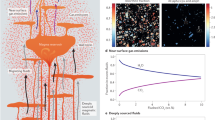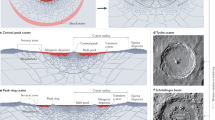Abstract
THE southern flank of Etna has been the site of three consecutive eruptions, remarkable for the diversity of the phenomena they presented.
This is a preview of subscription content, access via your institution
Access options
Subscribe to this journal
Receive 51 print issues and online access
$199.00 per year
only $3.90 per issue
Buy this article
- Purchase on Springer Link
- Instant access to full article PDF
Prices may be subject to local taxes which are calculated during checkout
Similar content being viewed by others
References
This paper was written in Italian, and sent as a letter to Dr. H. J. Johnston-Lavis, who has kindly translated it for NATURE, as requested by the author.
G. Platania "Stromboli e Vulcano, nel Settembre del 1889. Riposto 1889." This phenomenon I have often observed at Vesuvius, and I quite agree with Signer Platania as to its cause, as I have been able to look into the crater and watch the whole process.— Johnston-Lavis.
"South Italian Volcanoes," by Johnston-Lavis, Naples, 1891. "I Projettili Squarciati di Vulcano," by G. Platania . (Roma, 1891.)
Author information
Authors and Affiliations
Rights and permissions
About this article
Cite this article
PLATANIA, G. The Recent Eruption of Etna1. Nature 46, 542–547 (1892). https://doi.org/10.1038/046542a0
Issue Date:
DOI: https://doi.org/10.1038/046542a0
Comments
By submitting a comment you agree to abide by our Terms and Community Guidelines. If you find something abusive or that does not comply with our terms or guidelines please flag it as inappropriate.



